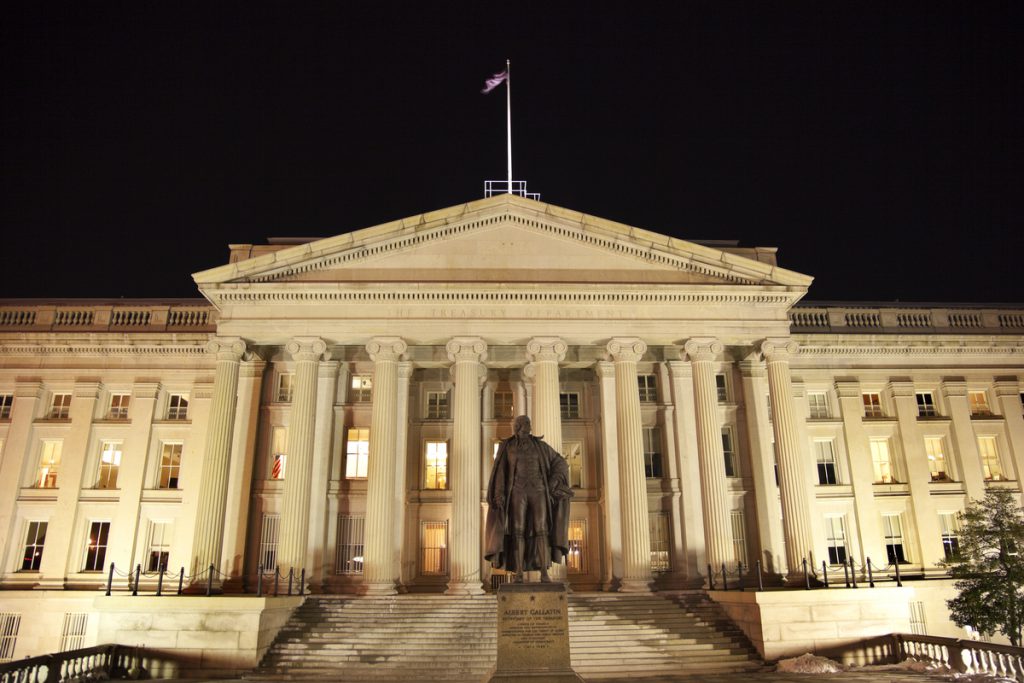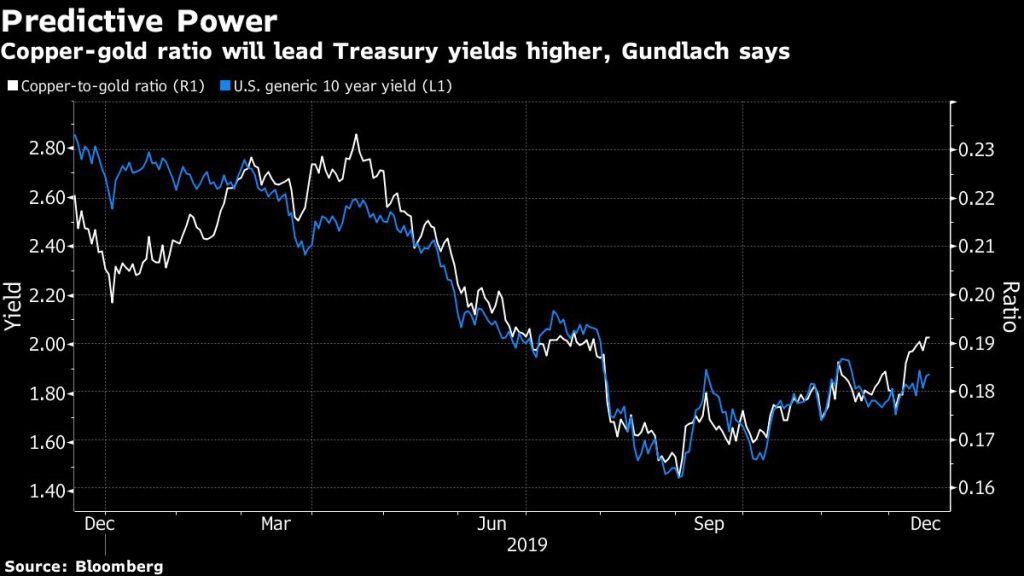
For Jeffrey Gundlach, the metals market is signaling 10-year Treasury yields may be heading to the highest level since June.
Easing U.S.-China trade tensions, culminating in Friday’s phase-one deal, have buoyed copper in recent weeks. The metal is often seen as a bellwether for economic growth. Meanwhile, gold — a haven destination for investors — has stagnated since its 2019 peak in early September amid a risk-on rally. As a result, copper prices have risen to the highest relative to gold since July.
In the view of DoubleLine Capital’s chief executive officer, that ratio’s rise paves the way for 10-year yields to climb to 2.15%, from 1.87% now, a call that’s at odds with some Wall Street banks.
Rallying copper tends to indicate demand for home-building and other industrial inputs — all signs of a reasonably strong economy, a message reinforced by range-bound gold prices, according to the billionaire bond manager. The gauge has worked “phenomenally well” as a short-term predictor of where Treasury yields are headed, Gundlach said.

“It’s one of the best indicators for near-term movement — for the next month or next couple of months — for 10-year Treasury yields,” Gundlach said in a phone interview. “It’s remarkable how well it’s worked and as time goes by, I feel more and more inclined to follow it and act on it.”
He said in September that markets had likely seen the low of the year in yields after the 10-year rate plunged to 1.43% that month, the lowest since 2016. So far that’s panned out.
Bond strategists largely see the 10-year Treasury yield struggling to breach 2% in 2020. On the bullish side, Citigroup Inc. predicts the rate will hit a record low of 1.25% next year, and Societe Generale predicts 1.2%.
Jefferies and Goldman Sachs Group Inc. are among banks calling for copper to extend its rally, citing increased demand and recovering Chinese growth.
While Gundlach sees under-priced inflation risks and rising U.S. deficits boosting yields in the long-term, he’s not ready to bet against Treasuries on the basis of the copper-gold ratio alone. However, it’s one factor that suggests bond managers should cut back on duration, he said.
“On the margin, in the mix of variables that go into asset allocation, I think you have to put copper-gold ratios as one that says you should be shorter duration than your index as an institutional money manager,” he said.
(By Katherine Greifeld, with assistance from John Gittelsohn)
Comments